With 75% of consumers saying they favor companies with customer loyalty programs, and 65% of average online business coming from existing customers, it’s no wonder rewards, or loyalty, programs have become so popular.
Customer loyalty programs:
- Make the customer feel special, like they’re in an exclusive club and treated as more of a VIP member
- Provide discounts to customers who stay committed to shopping at your store
- Improve customer retention rates instead of forcing businesses to find new customers on a regular basis
There are incredible benefits (for both sellers and customers) when it comes to running a customer loyalty program. But, as an ecommerce business owner, you may have some questions, like:
- What is a customer loyalty program?
- How do customer loyalty programs work?
- What are the different structures for rewards programs?
- What are some real-world examples of businesses using loyalty programs successfully? How are their programs structured?
- When should you add a customer loyalty program to your business?
- What are the top customer loyalty apps to add to your online store?
In this article, we answer all of these questions and more. Keep reading to learn all about customer loyalty programs, and to find the tools and ideas you need to make yours a success.
What is a Customer Loyalty Program?
The simplest definition of a customer loyalty program is this:
A customer loyalty program rewards shoppers who repeatedly buy from a business. It’s considered an effective customer retention tactic that prompts customers to potentially buy more, return for repeat purchases, and buy from your business instead of the competition.
Traditionally, loyalty programs reward repeat customers who buy from your brand, but some programs offer incentives for simple interactions, like signing up for an email newsletter (in exchange for customer data) or referring the business to friends and family.
Overall, these programs tend to give out more rewards to those who buy more from the business, while also decreasing churn.
How Do Customer Loyalty Programs Work?
A customer loyalty program works by giving something away to those who are most loyal to your business.
It’s common for loyalty programs to utilize a reward system, kind of like fake money or a punch card, which customers accumulate to redeem those things that you intend to give away.
For instance, a company might give away:
- Discounts
- Free products
- Free branded merchandise
- More rewards
- Exclusive event access
- Small gifts
- Birthday rewards
- Early access to new products, services, or sales
- Insider perks
- Offers and recommendations tailored to the customer
Giving away these types of benefits strengthens the relationship between the customer base and business, while also incentivizing customers to make multiple purchases. In general, the idea is to get customers to shop more and build customer loyalty towards your company.
Using a loyalty program is a two-way street. The business gives away benefits and items, many of which cost money. The goal, however, is to get several things back in return.
Customers who participate in loyalty programs provide:
- Brand advocacy: If you run a solid rewards program, customers may become extremely loyal to your brand, even wearing branded merchandise, discussing the brand with friends, or creating social media posts about it. This turns into one of the more cost-effective marketing options you can ask for.
- More sales: Loyalty programs have shown to increase average order value, and it makes sense, since someone trying to get more rewards may intentionally purchase more items, and return to your shop to ensure they reach the rewards levels.
- Longer customer retention: If customers find value in your rewards program, they’ll stick around longer. Customer loyalty programs are designed for that, considering customers often have to buy a certain number of products to reach specific rewards levels.
- Word of mouth (and online) referrals: Some loyalty programs encourage online referrals for a reward. You’ll also find that word of mouth marketing may increase if people see value in your loyalty program.
Overall, successful rewards programs are built on trust: The customer trusts your business enough to provide great rewards; in return, they commit more of their purchasing power to it. Furthermore, the customer relationship is built on trust that they'll remain faithful to your brand, so you reward them accordingly.
The Different Types of Customer Loyalty Programs
Now that you understand that basic purpose and inner workings of customer loyalty programs, let’s explore the most common rewards program structures to launch with your ecommerce business.
In short, most types of loyalty programs still stick to the essentials, such as rewards in exchange for purchases. However, the rewards program structure dictates which types of rewards the customers receive, along with how they can obtain them.
1. The Classic Loyalty Points System
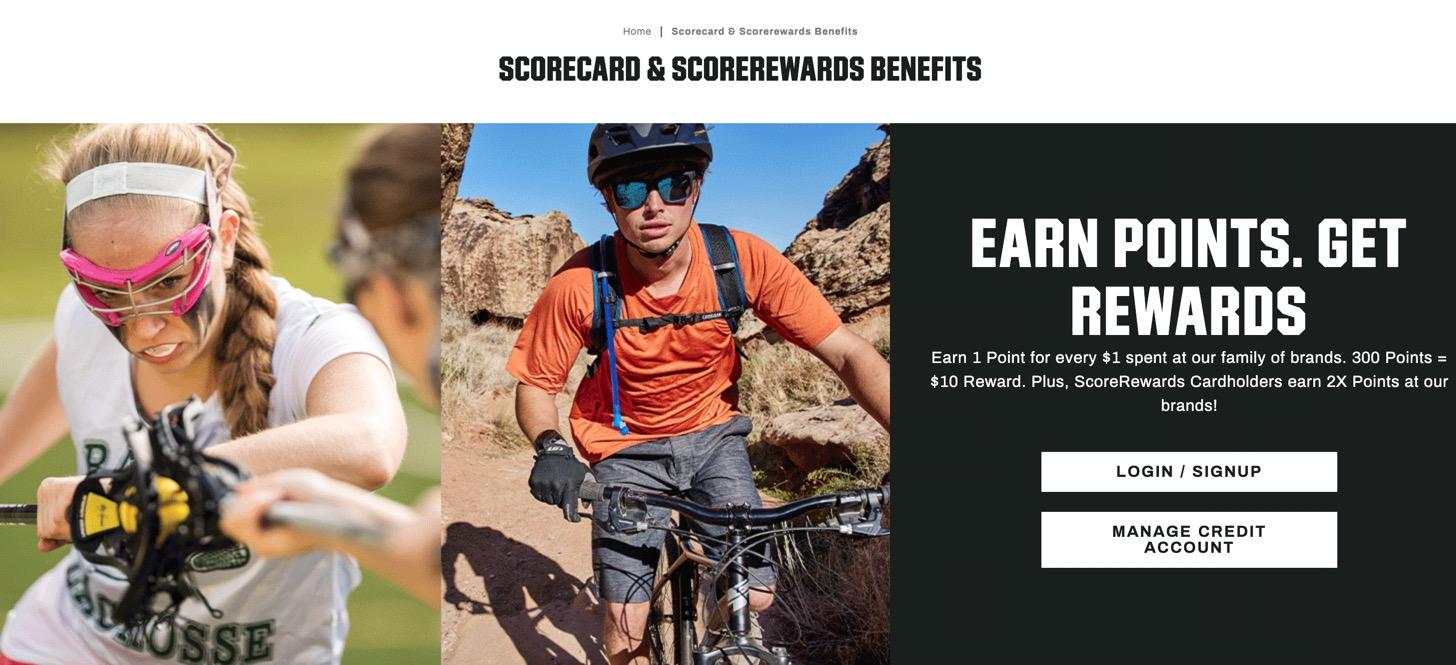
Perhaps the most common structure for a loyalty rewards program is the “points system,” where customers earn points for certain actions they take while on your ecommerce site. After they accumulate enough points, they can redeem those points for a reward.
With a points system, some ways for customers to earn points include:
- Placing orders
- Signing up for an email newsletter
- Leaving a review
- Having their birthday
- Following the brand on social media
- Sharing the brand with friends and family
All of these “point earning” options may vary based on your business. So, you might choose to give out points for purchases but not social media shares. It all depends on how you best expect your customers to feel valued.
Points-based customer loyalty programs have levels for customers to redeem those points. The points serve as credits, where the customer can go shopping when they reach the levels. For instance, customers may be able to get 20% off their next purchase with 10,000 points, but maybe 25,000 points gets them some sleek branded merchandise.
Once the customer uses points, they get deducted from their saved points total, like a wallet with money that they can only use at your ecommerce store.
2. Membership (Paid) Loyalty Programs
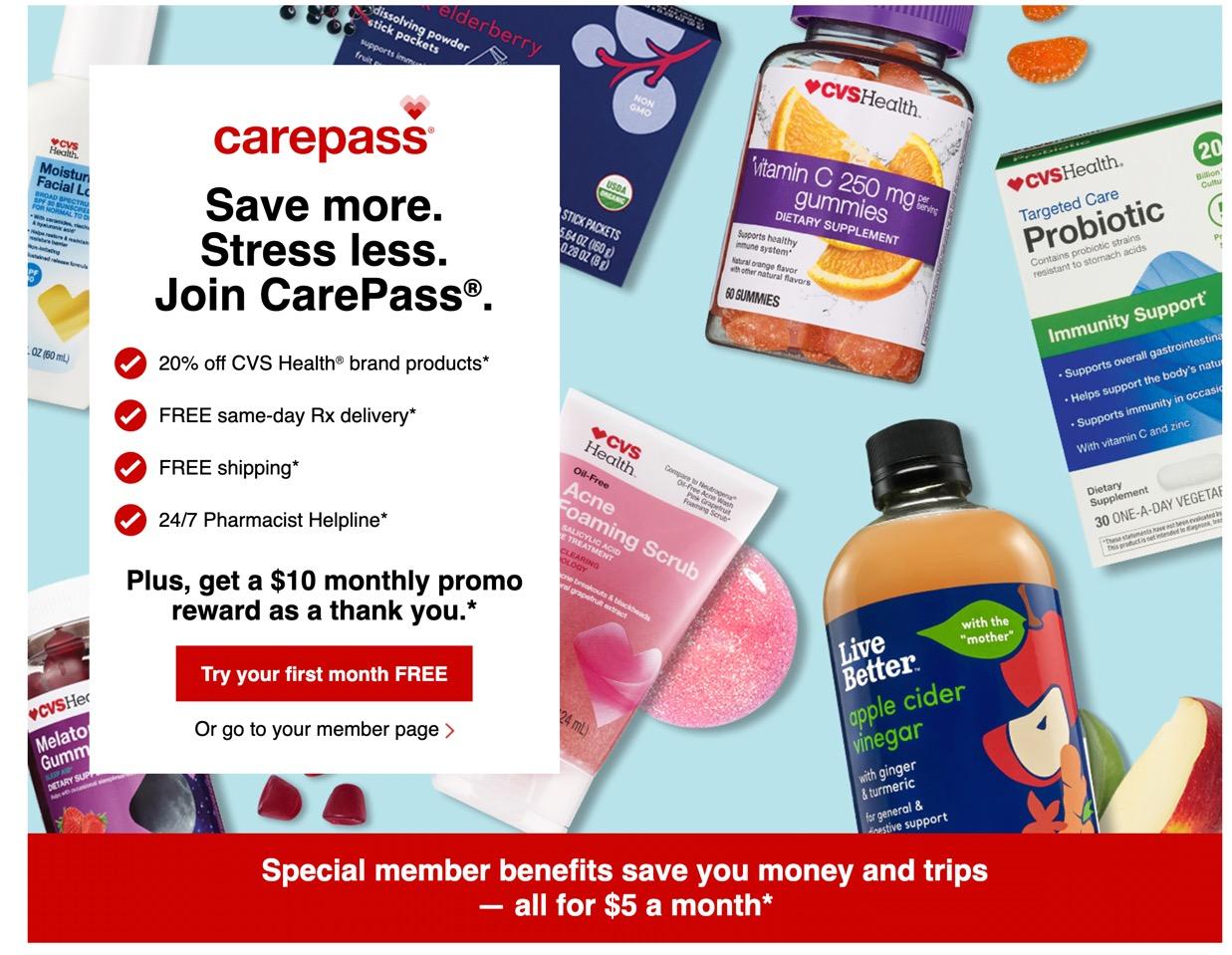
When you think of Costco, Amazon, and REI, what do they all have in common? They each have paid loyalty programs. Now, they may market it as a “membership” or “co-op,” but realistically, these are all simple, paid loyalty programs where there’s a sign-up fee to join.
Here’s how paid loyalty programs work:
- Customers pay an initial fee, sending immediate cashflow into the business and activating their membership.
- They may need to pay this on a recurring basis, like yearly or monthly.
- In order for paid memberships to work, the business must provide immediate value to the customer, along with ongoing benefits that exceed what you’d get with a regular points system. For instance, brands may provide a streaming service with thousands of movies and TV shows (Amazon Prime) or access to their extremely discounted retail store (Costco), or even a free product after signing up.
- Paid programs must also provide proof of value in order to convince customers to sign up. That means it may require some marketing dollars to get the word out.
People are more willing to sign up for paid customer loyalty programs when the brand is recognizable, and customers see an incredible amount of value in the membership. So, they’re a bit harder to create, but the result is a fiercely loyal fanbase, if successful.
Here are the common elements we’ve found in successful paid loyalty programs:
- The brand makes customer engagement a priority; examples include consistent discounts, newsletters, tips, perks, and communications.
- The most loyal customers tend to stick around more for customer experiences rather than discounts. These types of perks make them feel special, whether it’s VIP content or personalized experiences.
- The fees look small when compared to the exceptional benefits that come with signing up.
3. Value-based Loyalty Programs
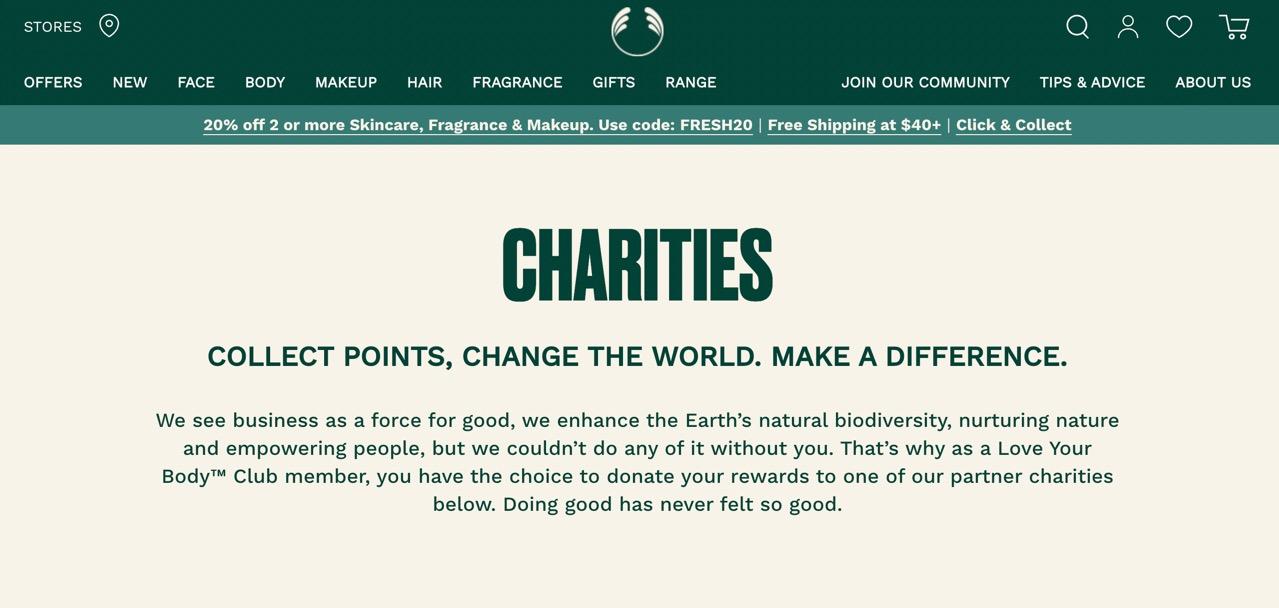
A value-based loyalty points program doesn’t actually reward customers, rather, it gives customers a choice as to where they’d like to donate their rewards earnings.
It’s most common for brands to combine a value-based loyalty program with another structure so that customers still receive something in return.
However, the value-based aspect works by showing customers that your brand cares about certain causes, and it also provides a sense of doing good whenever someone purchases a product from your store. Finally, the customer is often given some sort of control over the process, where they can decide which charity the donation goes to.
4. Tiered Loyalty Programs
From Southwest Airlines to Enterprise Rent-A-Car, tiered loyalty programs are alive and well, and they incorporate a type of gamification into a rewards program so that customers continue shopping to maintain their status.
We’ve seen the tiered loyalty model in ecommerce, travel, the rental industry, and other areas, so there’s no requirement for the type of business to make tiered programs successful.
A tiered loyalty program works by granting membership levels (other times referred to as ranks or statuses). Customers build their statuses by making purchases, and there are occasionally sign up bonuses or other ways to improve your level.

The brand categorizes each level with a name (something like Bronze, Silver, and Gold) to make each level more alluring than the next. And, the benefits improve as you move up levels, oftentimes with extremely enticing advantages for the higher levels (seeing as how these are most likely VIPs for your company).
We’ve also seen tiered loyalty programs with expiration dates, so it’s required for the members to use their status perks in one or two years.
Tiered customer loyalty programs provide several advantages:
- Customers receive a status or rank, making the higher-ranked customers feel like they belong to an exclusive club with extraordinary benefits.
- Members are likely to want to maintain their statuses once achieved, leading to more sales.
- It produces a simple way of identifying your VIP customers, especially when it comes to your target marketing strategy.
Real-world Examples of the Best Customer Loyalty Programs
Want some inspiration when developing your own rewards program? Here are our top picks for the most successful, creative, and unique brand loyalty programs in the retail and ecommerce worlds.
Barnes & Noble
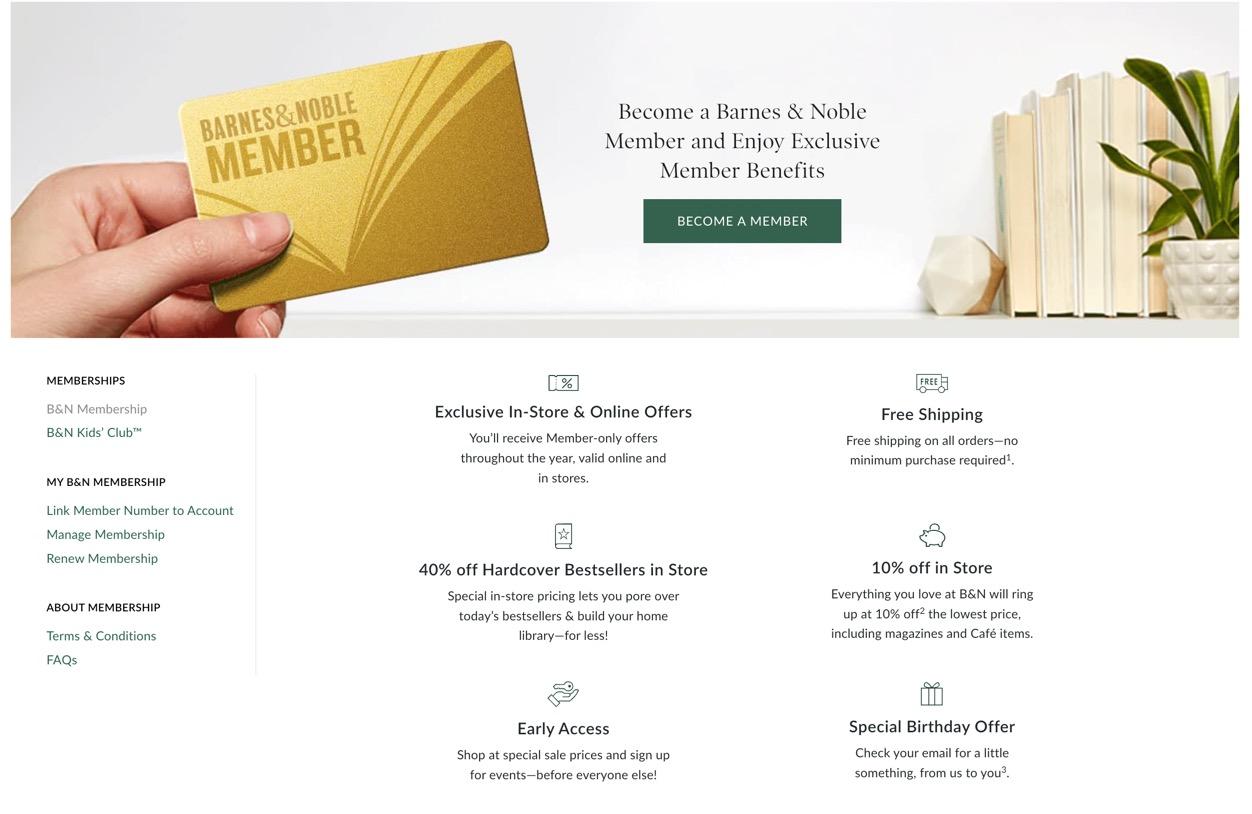
Starting off with a paid rewards program, Barnes & Noble encourages purchasing and reading through an exclusive membership. It even has a separate membership just for kids.
The Barnes & Noble rewards program requires a $25 payment per year, after which, members receive perks just for being a part of the program.
Some benefits for Barnes & Noble members include:
- Free shipping on all purchases
- 10% off all in-store items
- A special birthday offer in your email
- Early access to sales and events
- 40% off bestselling hardcovers (in-store only)
- Exclusive member offers throughout the year
- Discounts on Nook devices
The Barnes & Noble Kids’ Club is a more traditional (free) customer loyalty program with these benefits:
- A free cupcake from the Barnes & Noble cafe on birthdays
- $5 in rewards for every $100 spent in stores and online
- A welcome gift of 30% off any toy or kids’ book
CVS
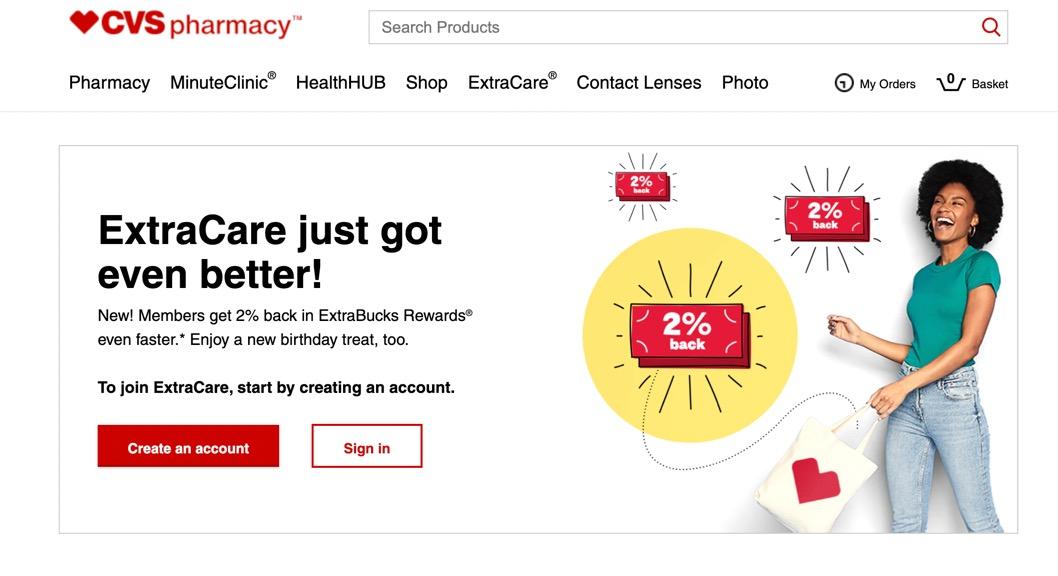
Called ExtraCare, the CVS rewards and loyalty program works in stores and online, and members receive consistent discount coupons throughout the year, accessible via mail or through the CVS app.
This program is like a hybrid between the classic points system, with some benefits customers might receive from a paid program, except it’s free to join.
Perks include:
- 2% back in rewards whenever you shop at CVS
- A $3 reward for your birthday every year
- Weekly ad deals
- Personalized deals sent through text, email, or through the CVS app
CVS also offers extensions of its main ExtraCare Program:
- ExtraCare BeautyClub: Provides rewards like a free beauty gift when you spend $30 each month in the Beauty category; 10% back in rewards when you shop at special beauty events; and mobile exclusives.
- ExtraCare Pharmacy and Health: Customers earn up to $50 per year in rewards cash when they fill prescriptions through CVS.
- CarePass: This is the paid membership version of the CVS loyalty program, where customers spend $5 per month to join and receive perks like a $10 promo reward each month, free same-day Rx delivery, and 20% off any CVS Health Brand products you buy.
Dick’s Sporting Goods
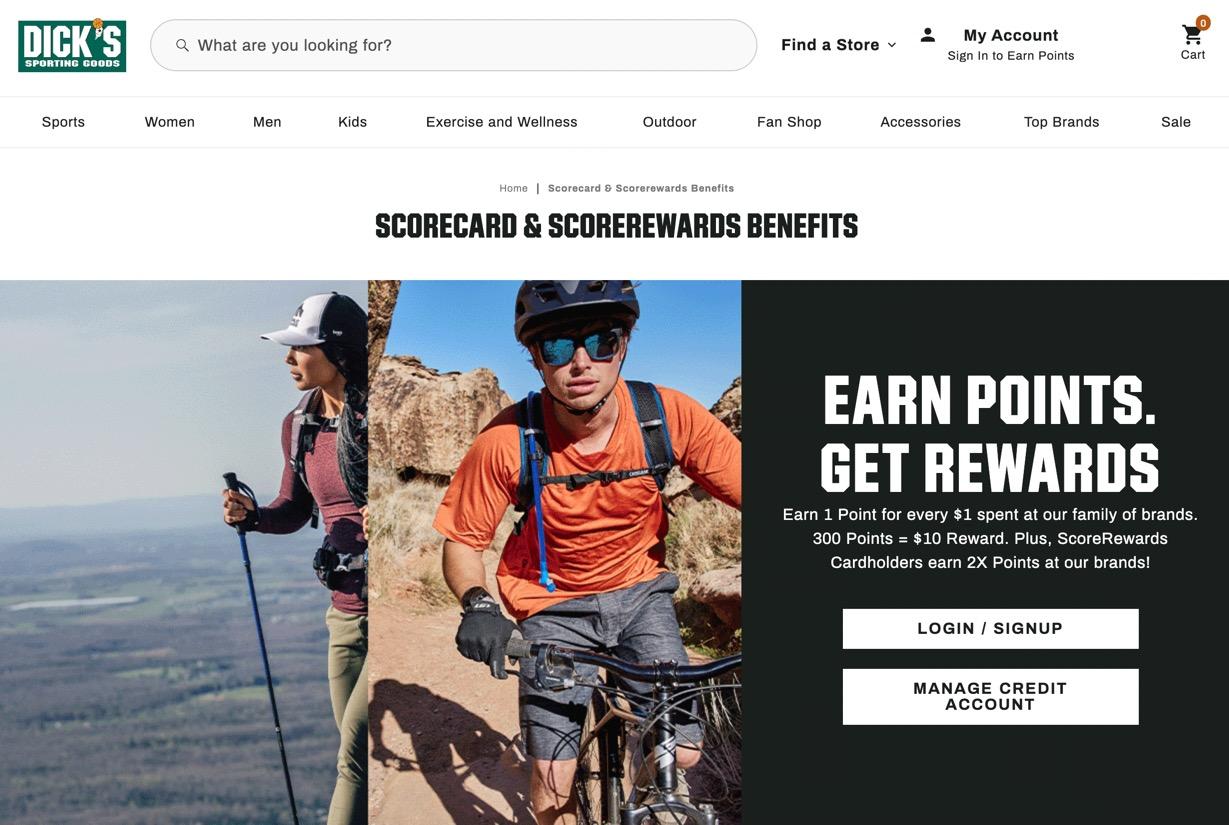
The Scorecard from Dick’s Sporting Goods provides what they call ScoreRewards to loyal shoppers of the popular sporting goods retailer.
It’s an excellent example of a hybrid loyalty program, with elements of a tiered system, classic points, and even a credit card (cash back rewards) mixed in there.
Here’s how it works:
- Customers can sign up for the ScoreCard for free. This gets them 1 reward point for every $1 they spend in a store or online. Other perks include free shipping for orders of $49+, insider deals and access, faster online checkout, and the earning of points if you connect your fitness tracker and stay active.
- There’s a tiered system that goes into effect if the customer spends $500+ per year at Dick’s Sporting Goods. When a customer reaches that level (called the Gold Level), they receive everything from the ScoreCard level, plus: the option to pick a day to receive 3X points; an annual $10 reward; Access to Gold exclusive offers; and a dedicated customer support line.
- Customers also have the option to sign up for the ScoreRewards credit card, which is the highest level possible and requires no fee to apply. In exchange, shoppers receive 2 rewards points for every $1 spent, everything from the previous levels, and special financing and cardholder deals.
Williams Sonoma
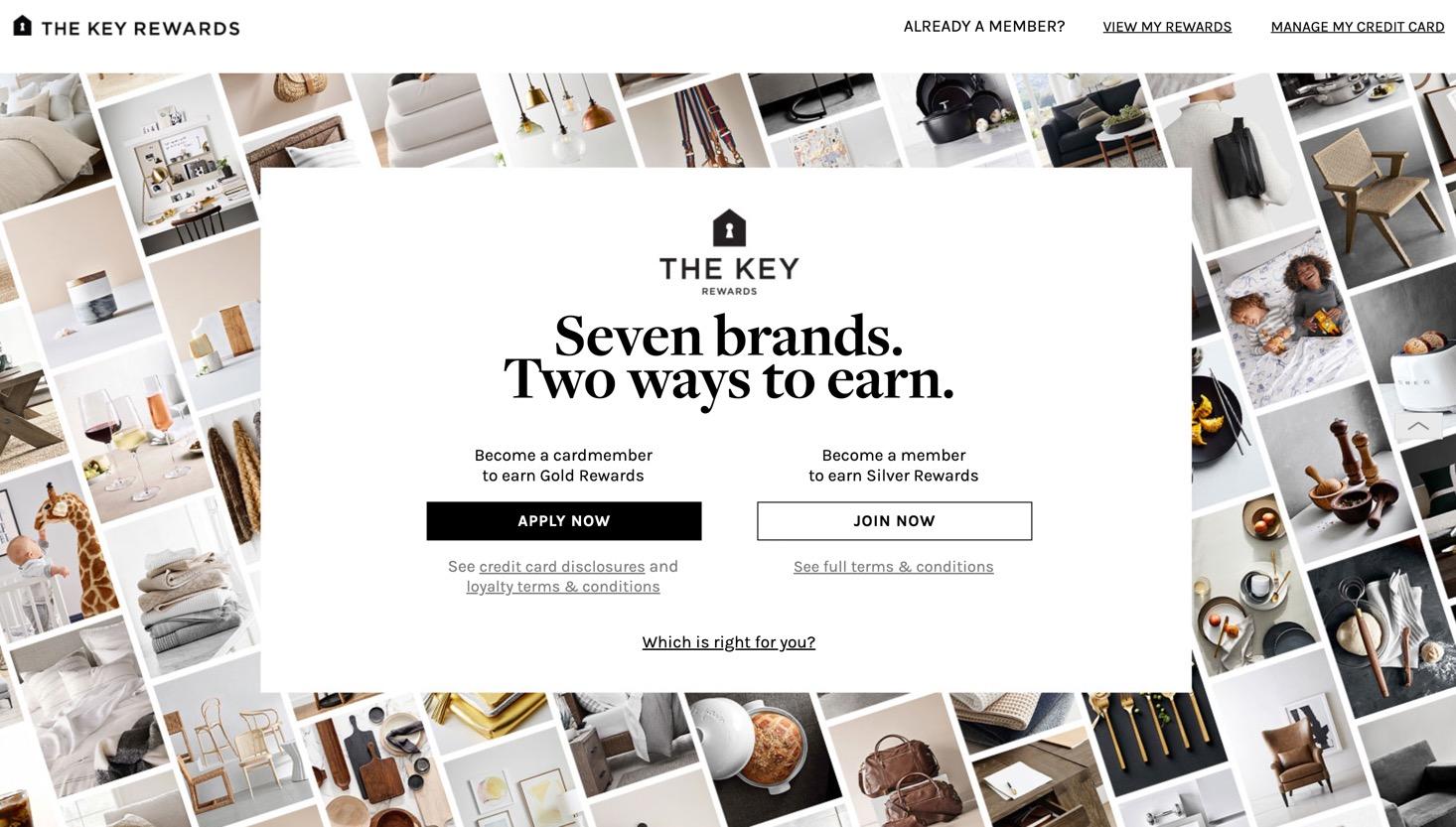
The Williams Sonoma brand offers what’s called “The Key Rewards,” which gives rewards for shopping at the seven brands owned by Williams Sonoma, including Williams Sonoma, Williams Sonoma Home, Pottery Barn, Pottery Barn Kids, Pottery Barn Teens, West Elm, and Mark & Graham.
This loyalty program functions on a tiered system, with the added option to apply for a credit card and receive even more benefits and rewards.
There are two tiers. The first tier is called Silver Rewards. Those members get:
- 2% in rewards for shopping at any of the brands listed above
- Members-only offers
- Early access to new products and sales
- A first look at new collections
- Free design services
The next is Gold Rewards (which requires customers to apply and be accepted for a credit card), with benefits like:
- 5% in rewards when shopping at all the brands previously listed
- 2X in rewards for the first 30 days
- 1% card rewards for shopping anywhere else
- Everything from the previous level
- Free shipping from Williams Sonoma
- A $25 birthday reward
- 10% back on all shopping for the first 30 days
- Options for 12-month financing
The Body Shop
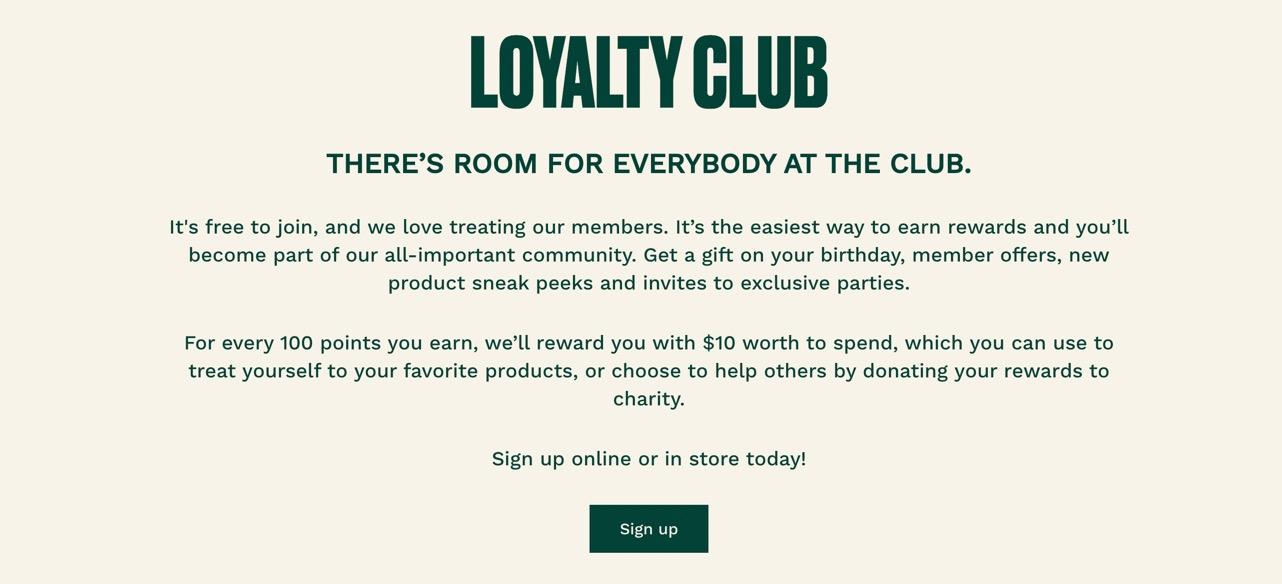
The Body Shop sells all sorts of bath and body products, ranging from facial lotions to hair treatments. Its loyalty program incorporates two structures: a classic points system and a value-based loyalty program for donating customer rewards to worthy causes.
The premise is simple: Receive $10 in rewards spending for every 100 points you earn. After reaching the necessary levels for spending, customers can opt to shop for themselves or choose a charity to donate to. The Body Shop has partnered with some wildlife, civil rights, and domestic violence charities so that customers have control over where their rewards dollars go.
As for the program itself, there’s more to it than simple points. It’s free to sign up, and members get:
- 1 point for every $1 they spend
- Invitations to exclusive member parties, events, and sneak previews for products
- A $10 birthday reward
- The option to donate points to charity or to use them for shopping yourself
REI
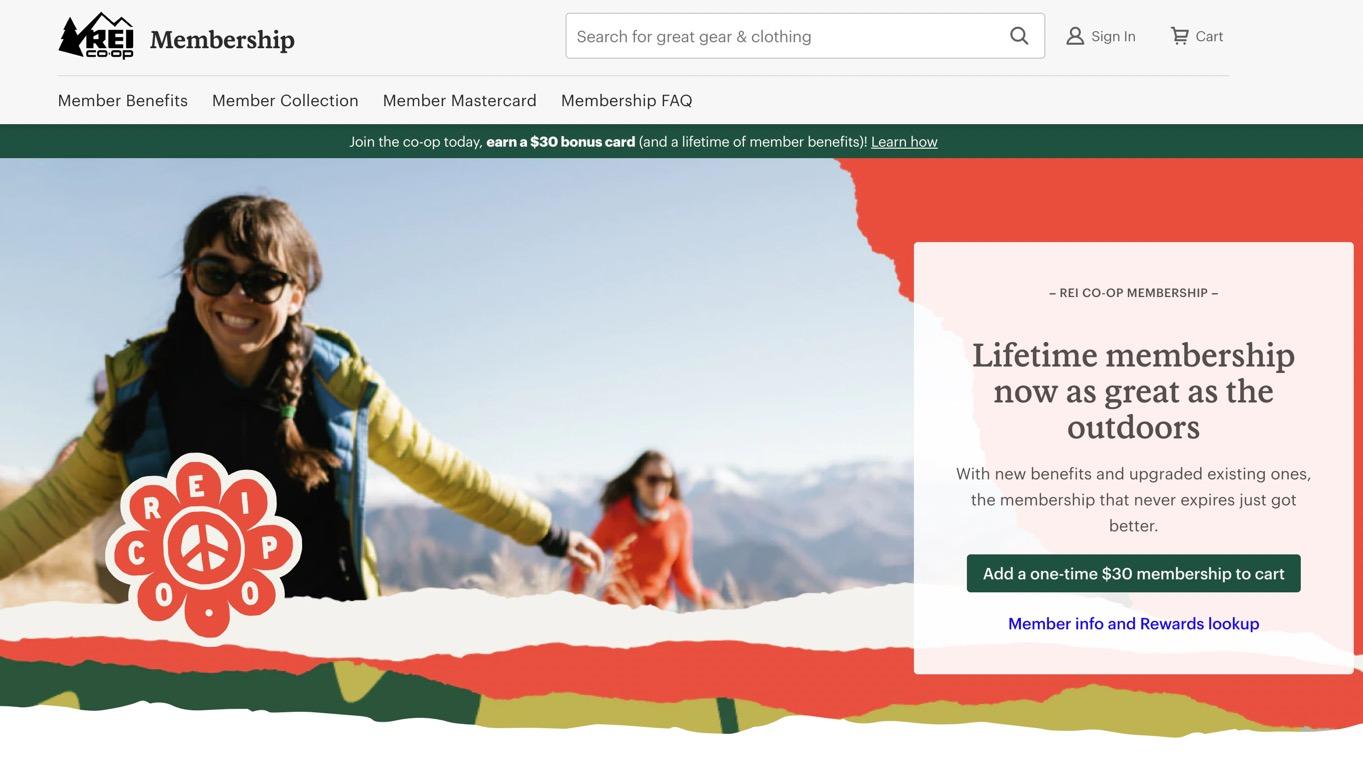
Anyone can shop at REI (online or in stores), but membership to the popular outdoor retailer works on a paid loyalty system, with a $30 one-time fee to join.
It’s a lifetime membership that includes:
- 10% back annually on eligible purchases
- Free standard shipping
- Special member offers
- A special member collection to choose from
- Discounts on rentals
- Discounts on bike and snow shop services
- The option to sign up for the REI credit card for even more rewards
- Free machine waxing and flat tire repairs
- Exclusive member events
- Donations to wildlife charities when you sign up for a membership
- Discounts on experiences
- Options to buy and trade in used gear
When Should You Add a Loyalty Program to Your Business?
The answer to this question is simple: whenever you’ve developed a strong plan of action for a loyalty program.
You don’t have to worry about your industry; there have been successful loyalty programs from all types of businesses. And we already know that loyalty programs are wonderful options for improving trust, gratitude, and the overall experience for customers. Not to mention, the data shows that retaining current customers is a more sustainable plan than constantly trying to acquire new ones.
So, here’s how you can start:
- Establish loyalty from the moment you start a business, even if it’s just by reaching out with an automated welcome email, providing a coupon after their first purchase, or sending out a survey to get customer feedback. All of these build trust, and you’re able to acquire email addresses in the process.
- Choose a structure for your customer loyalty program; pick from the common ones like a points system, paid membership, value-based program, or tiered loyalty program—or, consider a hybrid version.
- Identify the levels of your program and the rewards you plan to give out. Are the levels or points easy enough to achieve? Will customers actually find value in the rewards?
- Make sure to add immediate value to your rewards program, like with a discount or gift for signing up.
- Get creative with rewards, level names, perks, and the overall branding for your loyalty program. We’ve found that the most successful rewards programs are unique to the brands offering them. Avoid generic rewards systems at all costs.
- Create and manage your program with a customer loyalty app. There are plenty of apps to choose through popular ecommerce platforms, including Shopify, Bigcommerce, and WooCommerce. We’ll cover our favorite customer loyalty apps in the section below.
- Continue following up with loyal customers: ask for feedback, run surveys, and analyze the overall use of the program. This ensures that you’re providing value well into the future.
Top 3 Customer Loyalty Apps
The beauty of running a rewards program is that there’s no need to go develop the software yourself; several apps are available on Shopify, Bigcommerce, and WooCommerce for establishing customer loyalty programs, adding rewards, setting levels, and seamlessly integrating the system to your current online store.
There are quite a few to pick from, but here are our favorites based on rigorous testing and analysis.
1. Growave
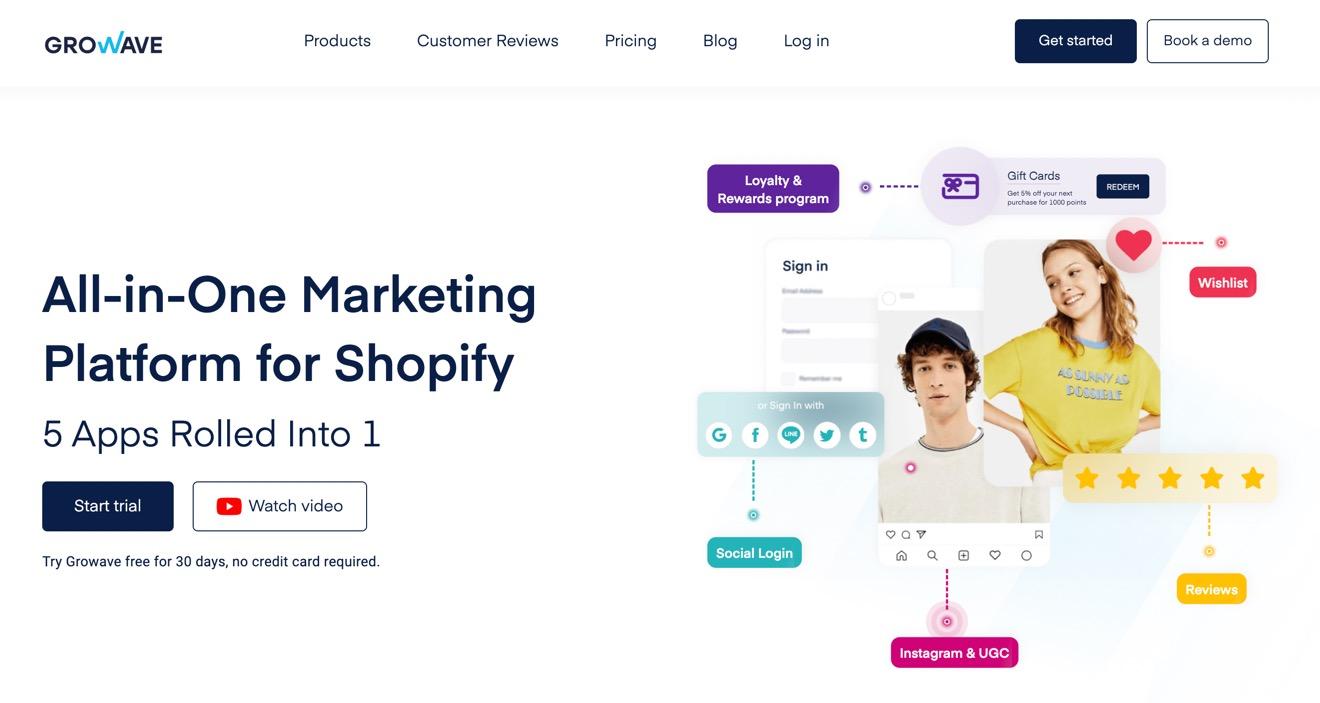
Growave is a 5-in-1 marketing system for Shopify that features a loyalty program, social login, wishlist, customer satisfaction reviews, and user-generated content. The loyalty and rewards module lets you reward users for following your brand on social sites, sharing on social media, leaving reviews, and making purchases. You can also give out birthday gifts and tap into the API for the ultimate customization. Integrations include Shopify and Shopify Plus, but the API access may offer integration solutions for other platforms.
2. Smile.io
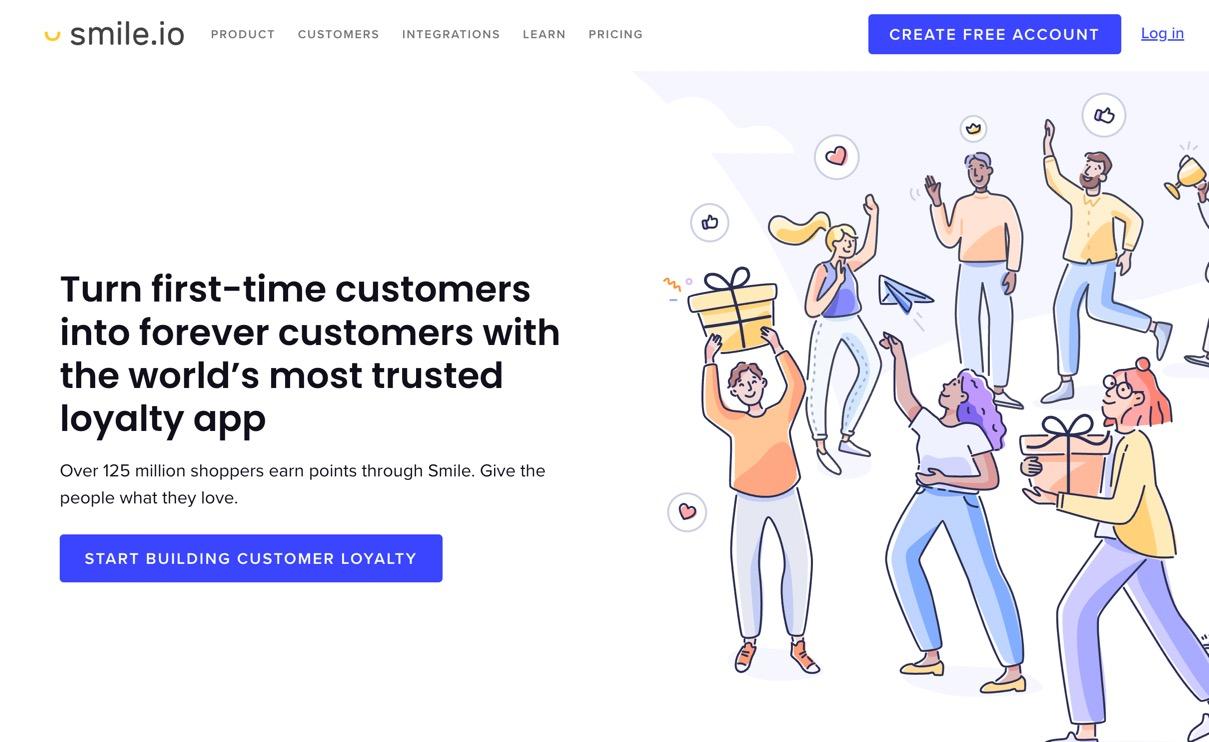
Smile.io is an app that lets you give points to customers, grant VIP perks, and configure a referral system, all with tools to customize the entire look and feel of your program. The main integrations include Shopify, Shopify Plus, Bigcommerce, and Wix, but they have an API to link the app to any type of platform.
3. Yotpo
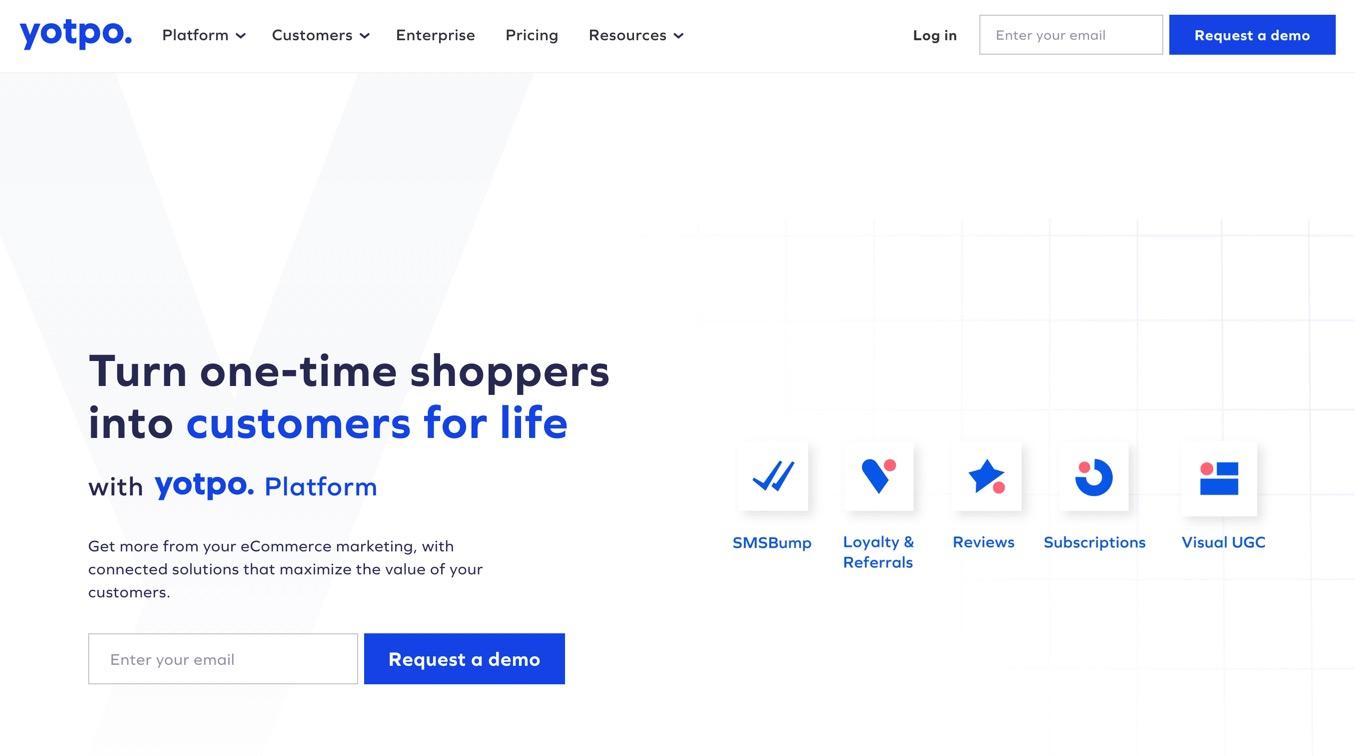
Yotpo is a suite of ecommerce marketing tools, with features for customer reviews, user-generated content, SMS marketing, subscriptions, loyalty programs, and referrals. It’s used by popular brands such as Allbirds, Chubbies, MVMT, and Parks Project. Highlights of the loyalty module include diverse reward offerings, advanced segmentation, campaign scheduling, tier-based programs, and templates for loyalty programs.
Our Summary on Customer Loyalty Programs
You’ve learned that customer loyalty programs—especially for online stores—make wonderful customer outreach and trust opportunities. Not only do your customers feel like VIPs while shopping, but your brand receives brand advocates, increased shopping, and loyalty along the way.
The best way to start is to acknowledge that any business can run a successful loyalty program; its success is simply decided by your creativity, value of the perks, and if it corresponds nicely with your branding and what customers want.
Use the notable examples like Barnes & Noble and Dick’s Sporting Goods to create your customer loyalty program, then turn to an app like Growave, Smile.io, or Yotpo to easily launch a rewards program that links to your online store.
If you need any clarification about customer loyalty programs, or would like to share your experiences with running one, leave us a comment in the section below!







Comments 0 Responses